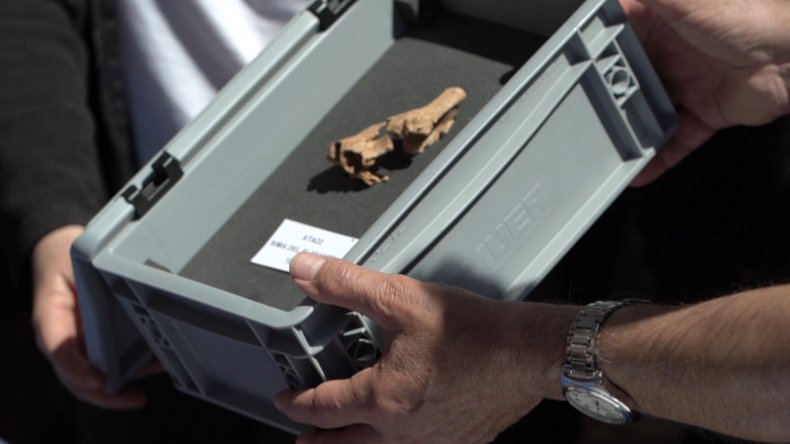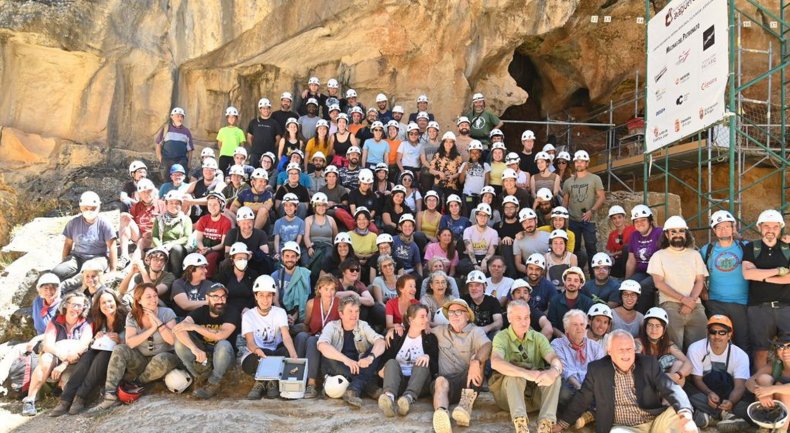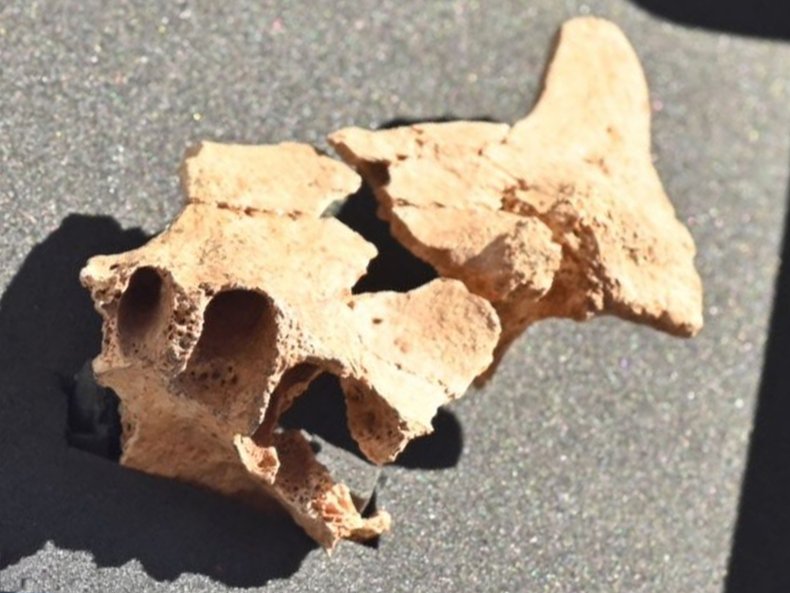BY LEE BULLEN,
ZENGER NEWS ON 7/27/22
Spanish archaeologists have named the oldest hominid ever found in Europe "Pink" after the legendary English rock band Pink Floyd.
Remains of humankind's ancient ancestor, dating back 1.4 million years, were unearthed in northern Spain earlier this year.
Now the team who discovered the remains - Juan Luis Arsuaga, Eudald Carbonell and Jose Maria Bermudez de Castro - have named the hominid "Pink."
They say it is in honor of the progressive rock group Pink Floyd and their classic album Dark Side of the Moon.

Remains of humankind's ancient ancestor, dating back 1.4 million years, were unearthed in northern Spain earlier this year.
Now the team who discovered the remains - Juan Luis Arsuaga, Eudald Carbonell and Jose Maria Bermudez de Castro - have named the hominid "Pink."
They say it is in honor of the progressive rock group Pink Floyd and their classic album Dark Side of the Moon.

Presentation of the remains of the first European human being found in Atapuerca archaeological site, Burgos, Spain, July 2022. It has been named after the band Pink Floyd.
ZENGER/FUNDACION ATAPUERCA
The found fragments make up the left part of the ancient's face and include the maxilla, the edge of the nose, the malar bone, which forms the cheek and part of the eye socket, and dental alveoli, the jaw sockets for teeth.
The amazingly well-preserved remains were discovered at Level TE7 at the Sima del Elefante site in the Atapuerca Mountains in northern Spain.
The found fragments make up the left part of the ancient's face and include the maxilla, the edge of the nose, the malar bone, which forms the cheek and part of the eye socket, and dental alveoli, the jaw sockets for teeth.
The amazingly well-preserved remains were discovered at Level TE7 at the Sima del Elefante site in the Atapuerca Mountains in northern Spain.
The archaeological organization behind the discovery, Fundacion Atapuerca, said in a statement that "the star discovery this year was the partial face of a human being, who lived and died in the Sierra de Atapuerca around 1.4 million years ago (Sima del Elefante site).
"This is the face of the first European, which promises to be crucial in research on the emergence of modern faces. We are talking about such an emblematic find that the team has decided to give this fossil its own name, which from now on we will know as PINK, in tribute to the legendary album by the British rock band Pink Floyd, released in 1973 and called The Dark Side of the Moon".

Investigation team of Atapuerca with the discovery. The team called the fossil "the face of the first European."
ZENGER/SUSANA SANTAMARIA-FUNDACION ATAPUERCA
Sima del Elefante, or Pit of the Elephant, has yielded the earliest human remains in western Europe.
Other important finds include fragments of the archaic human Homo antecessor, such as jawbone and teeth that date to 1.2 to 0.8 million years ago.
These were found in Sima del Elefante's Gran Dolina cave in 1994, while the species itself was officially described as the last common ancestor of modern humans and Neanderthal in 1997.
The new find was detected by research team member Edgar Tellez who noticed a few bone remains covered in clay on June 30.
Sima del Elefante, or Pit of the Elephant, has yielded the earliest human remains in western Europe.
Other important finds include fragments of the archaic human Homo antecessor, such as jawbone and teeth that date to 1.2 to 0.8 million years ago.
These were found in Sima del Elefante's Gran Dolina cave in 1994, while the species itself was officially described as the last common ancestor of modern humans and Neanderthal in 1997.
The new find was detected by research team member Edgar Tellez who noticed a few bone remains covered in clay on June 30.

Partial face of the hominid found in the site of Sima del Elefante, in Atapuerca, Spain, 2022. The fossil promises to be crucial in the research on the emergence of modern faces.
ZENGER/SUSANA SANTAMARIA-FUNDACION ATAPUERCA
The team added: "After cleaning and scrutiny by several of the team's specialists, we can now confirm that the remains are from a human jaw."
The find represents an important clue to understanding the evolutionary origins of early hominids outside of Africa.
Fundacion Atapuerca said that about 320 researchers had taken part in excavation work at their sites over the last year.
WHICH ONE OF YOU IS PINK?The team added: "After cleaning and scrutiny by several of the team's specialists, we can now confirm that the remains are from a human jaw."
The find represents an important clue to understanding the evolutionary origins of early hominids outside of Africa.
Fundacion Atapuerca said that about 320 researchers had taken part in excavation work at their sites over the last year.
No comments:
Post a Comment